Burnsall
OS grid reference:- SE 031 615
The highly attractive riverside village of Burnsall, a settement dating back to Anglo-Saxon times, lies in beautiful Upper Wharfedale in the Yorkshire Dales National Park.
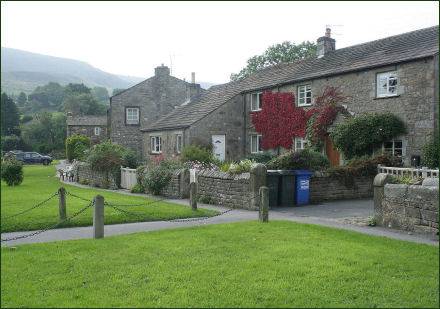
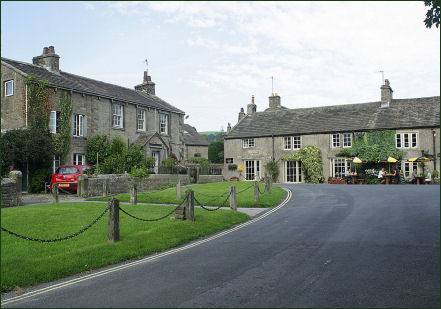
Situated by an ancient packhorse bridge crossing a bend in the River Wharfe, the village lies 2 miles to the south-east of Grassington.
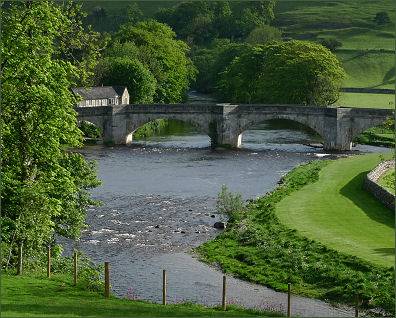
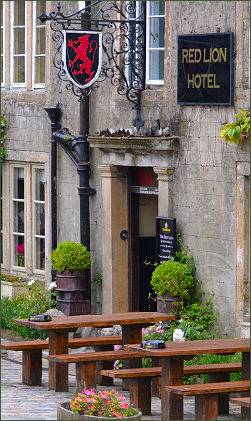 Burnsall makes an ideal location for a holiday in the Yorkshire Dales, the village boasts a picturesque five arched stone bridge, an ancient parish church, a chapel, a cricket pitch by the river, tea rooms, two hotels and a pub, the Red Lion Hotel. Surrounded by high fells, the village cottages lining the road are built of local stone. The surrounding area is a patchwork of fields dotted with farmhouses and cottages.
Burnsall makes an ideal location for a holiday in the Yorkshire Dales, the village boasts a picturesque five arched stone bridge, an ancient parish church, a chapel, a cricket pitch by the river, tea rooms, two hotels and a pub, the Red Lion Hotel. Surrounded by high fells, the village cottages lining the road are built of local stone. The surrounding area is a patchwork of fields dotted with farmhouses and cottages.
The village school, which is a Grade II listed building, dates back to 1602 and was once a grammar school which was founded by William Craven. An inscription over the doorway reads "William Craven, Alderman of London, Founder of this school, anno domini 1601".
William Craven was born in nearby the village of Appletreewick and made his way to London where he prospered and rose to become Lord Mayor of the city in 1611. It has been suggested that the story of Dick Whittington is based on Craven's career.
The Red Lion Inn (pictured right) dates back to the sixteenth century, and was originally a Ferryman's inn. The cellars are much older than the rest of the building and are said to date from the twelfth century. The inn is open for accommodation and meals throughout the year and offers excellent food, fine wines and real ale.
The cricket pitch in the village has the reputation as being the most picturesque in England, with the River Wharfe forming a boundary while Burnsall Fell, which rises to 1,661 feet, forms a scenic backdrop. Just above the vicarage, the natural spring known as Parsons Well can be seen and nearby is the stunning and unusual limestone feature of Loup Scar Gorge, just outside the village.
A path along the river from Burnsall to Hebden, 1 mile (2 km) to the north-west, dates back to Viking times. In August every year the traditional Village feast and sports is held, including the fell race, which is said to be the oldest in England. Burnsall lies on both the Dales Way, an 85 mile long distance footpath connecting Ilkley and Bowness-on-Windermere, and the Way of the Roses, a cycling course which opened in 2010 and goes coast to coast from Morecambe in Lancashire to Bridlington in East Yorkshire.
St Wilfred's Church
The ancient village church is dedicated to St Wilfrid, who was a seventh century Anglo-Saxon saint from Northumbria, who lived 634 to 709. Wilfrid is one of the greatest and also one of the most controversial English Saints. He directly influenced the move away from Celtic to the more orderly Roman church practices and is best known for championing and winning the case for the Roman, as opposed to the Celtic method of calculating the date of Easter at the famous Synod of Whitby in 664.


A place of worship has occupied this site since at least the late ninth century. The present church, which is perpendicular in style, is a Grade I listed building. It contains an unusual eleventh century font elaborately carved with bird and beasts, twelve Anglo-Saxon sculpture fragments and a fourteenth century alabaster panel depicting the Adoration of the Magi.
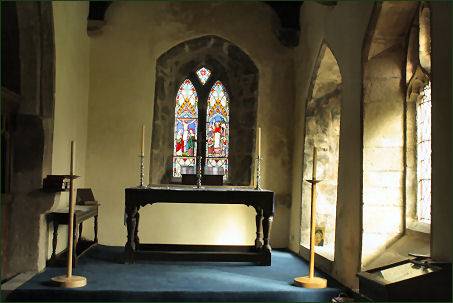
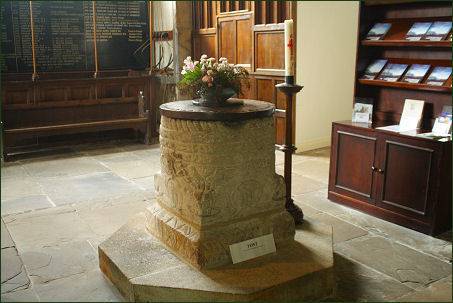
The east window of St Wilfrid's Chapel depicts the saint as a youth with his patron Queen Enfleda at the monastery at Lindisfarne on the left and on the right as Bishop of York in 669. The church may have been endowed by the Romille family who acquired the Manor of Burnsall from the King's theigns within 50 years of the Domesday Survey. During a refurbishment of the church in the mid nineteenth century, a number of Viking stones and artefacts were discovered. Some of these have been retained in the church, and form a fascinating exhibition at the back of the building. There are also some old stocks in the churchyard.
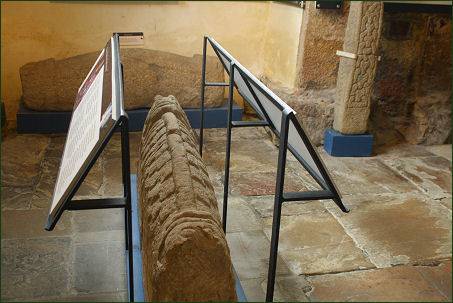
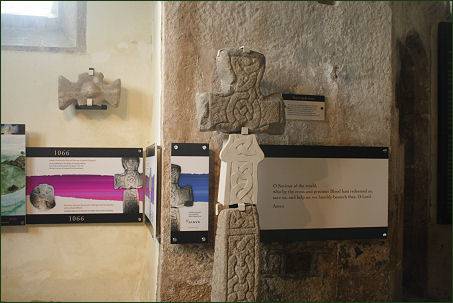
Nearby attractions include Bolton Abbey, the Embsay and Bolton Abbey Steam Railway, Loup Scar and the limestone gorge of Troller's Gill in Trollerdale, which is reputed to be haunted by Scandinavian trolls and a huge spectral hound. Stump Cross Caverns is also just a few miles from the village, Just downstream from Burnsall stand the historic ruins of Barden Tower.
Towns and Villages of Yorkshire
